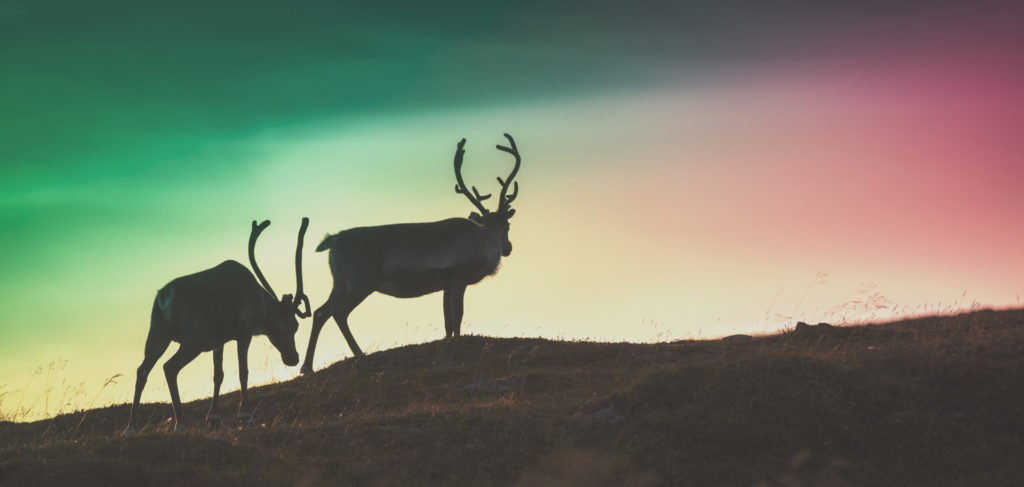What is the History of Reindeer Herding in Lapland?
Lapland, a region synonymous with pristine wilderness and the enchanting Northern Lights, is also the heartland of a unique and ancient tradition: reindeer herding. This practice, deeply intertwined with the culture and history of the indigenous Sami people, has evolved over millennia. In this blog post, we delve into the origins, cultural significance, and modern challenges of reindeer herding in Lapland, providing a comprehensive overview for those eager to learn more about this fascinating tradition.
The Origins of Reindeer Herding in Lapland
The history of reindeer herding in Lapland dates back thousands of years. Reindeer, known scientifically as Rangifer tarandus, have been integral to the survival and culture of the Sami people, the indigenous inhabitants of the region. Archaeological evidence suggests that reindeer were domesticated in Lapland as early as 2,000 years ago. Initially, the Sami people hunted wild reindeer, but over time, they began to domesticate and herd them, recognising the benefits of a more sustainable and reliable food source.
Reindeer herding likely evolved from the need to manage and protect reindeer populations, ensuring a steady supply of meat, hides, and antlers. The practice was also influenced by the migratory patterns of reindeer, which naturally move between seasonal grazing areas. The Sami developed sophisticated herding techniques to guide and manage these migrations, ensuring the well-being of their herds.
Throughout history, reindeer herding has been shaped by various factors, including climate changes, socio-political developments, and technological advancements. Despite these changes, the core principles of reindeer herding have remained consistent, reflecting a deep understanding of and respect for the natural environment.
The Role of Reindeer Herding in Sami Culture
Reindeer herding is not merely an economic activity for the Sami people; it is a way of life that permeates every aspect of their culture. The Sami have a profound spiritual connection to reindeer, viewing them as more than just livestock. Reindeer are considered sacred animals, and their well-being is closely linked to the health and prosperity of the Sami community.
Traditionally, reindeer herding has been a family-based activity, with knowledge and skills passed down through generations. The Sami have developed a rich cultural heritage around reindeer herding, including unique languages, folklore, and rituals. For example, the Sami use a variety of specialised terms to describe different types of reindeer, their behaviours, and the landscapes they inhabit.
Reindeer herding also plays a crucial role in Sami social structures and identity. It fosters a sense of community and cooperation, as herding often requires collective effort and mutual support. Seasonal migrations and gatherings, such as the annual reindeer round-ups, are important social events that strengthen communal bonds and cultural continuity.
Modern Challenges and Transformations in Reindeer Herding
While reindeer herding remains a vital part of Sami culture, it faces numerous challenges in the modern era. Climate change is one of the most significant threats, as it affects the availability and quality of grazing lands. Warmer temperatures and unpredictable weather patterns can disrupt the delicate balance of the Arctic ecosystem, making it harder for reindeer to find food and survive.
Additionally, economic pressures and land use conflicts pose significant challenges to traditional herding practices. The expansion of infrastructure, tourism, and industrial activities in Lapland can encroach on grazing areas and migration routes, leading to habitat fragmentation and increased stress on reindeer populations. The Sami have had to adapt to these changes, often incorporating modern technologies such as GPS tracking and snowmobiles to manage their herds more effectively.
Despite these challenges, the Sami people continue to demonstrate resilience and adaptability. They are actively involved in efforts to protect their cultural heritage and the environment, advocating for sustainable land use practices and policies that support reindeer herding. Organisations and initiatives aimed at preserving Sami culture and promoting reindeer herding as a sustainable livelihood are crucial in this regard.
At VALO Finland, we are committed to providing our guests with an authentic and immersive experience of Lapland’s rich cultural heritage. Our luxury retreats offer the perfect base for exploring the region and learning about the ancient tradition of reindeer herding. With our expert guides and carefully curated activities, you can gain a deeper understanding of the Sami way of life and the enduring significance of reindeer herding in Lapland.
Whether you are staying in our beautifully designed VALO Ice Cube Villas or exploring the stunning landscapes of Saariselkä, we strive to make your visit to Lapland a memorable and enriching experience. Join us in celebrating the timeless tradition of reindeer herding and discover the magic of Lapland with VALO Finland.
